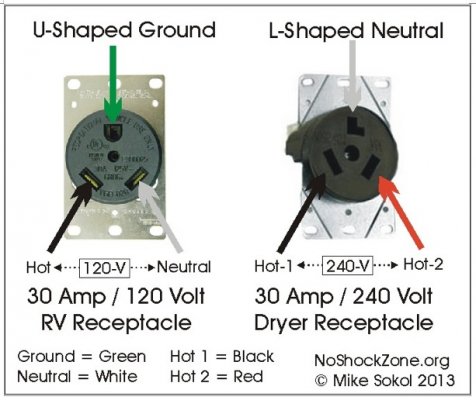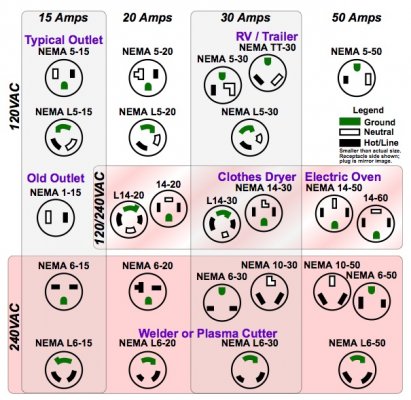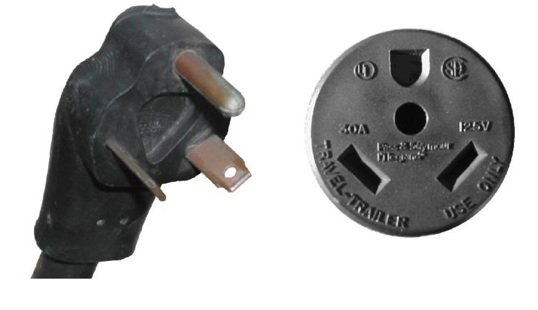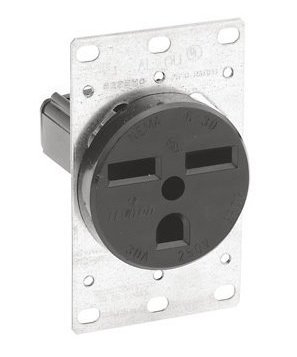John From Detroit said:The TT-30 looks exactly like the outlet in my parent's house for the dryer,, I mean EXACTLY in fact the plug fits.
Hey guys,
I'm Mike Sokol from NoShockZone. Thanks for linking to my article about mis-wired TT-30 outlets. I would say that 30-amp Dryer and RV outlets look VERY similar, but they definitely are NOT the same receptacle. And I would guess that it's nearly impossible to force a 30-amp/120-volt RV shore power plug into a 30-amp/240-volt Dryer outlet. You can see how different they are in my graphic below.
That being said, while the TT-30 RV receptacle is clearly marked for 125 volts maximum, it really looks like it should be a 240-volt service. And I would guess that your average home electrician has seen zero RV outlets, but wired dozens or even hundreds of 240-volt dryer outlets in his day. But, he really is paid to know what he's doing, and should be insured. So if he goofs up and destroys your RV's electrical system, he should pay for his mistake.
And yes, I too have been on dozens of forum threads with this exact failure scenario, sometimes costing 10's of thousands of dollars to repair. So its up to each of us to understand enough how to test EVERY new power outlet for proper grounding and voltage BEFORE we plug an RV into it. And do this even if you've just paid an electrician to wire in a pedestal outlet for your RV at your home. This is especially important for RV 30-amp shore power outlets because of the 120/240-volt confusion.
Mike Sokol




